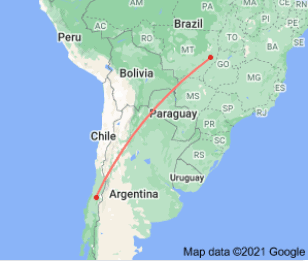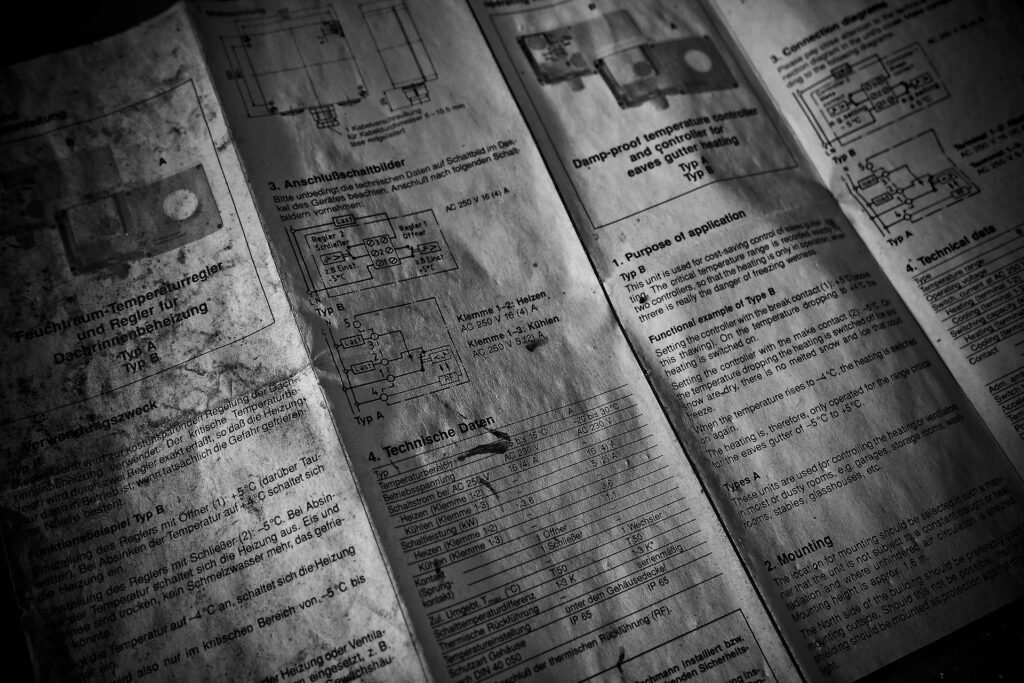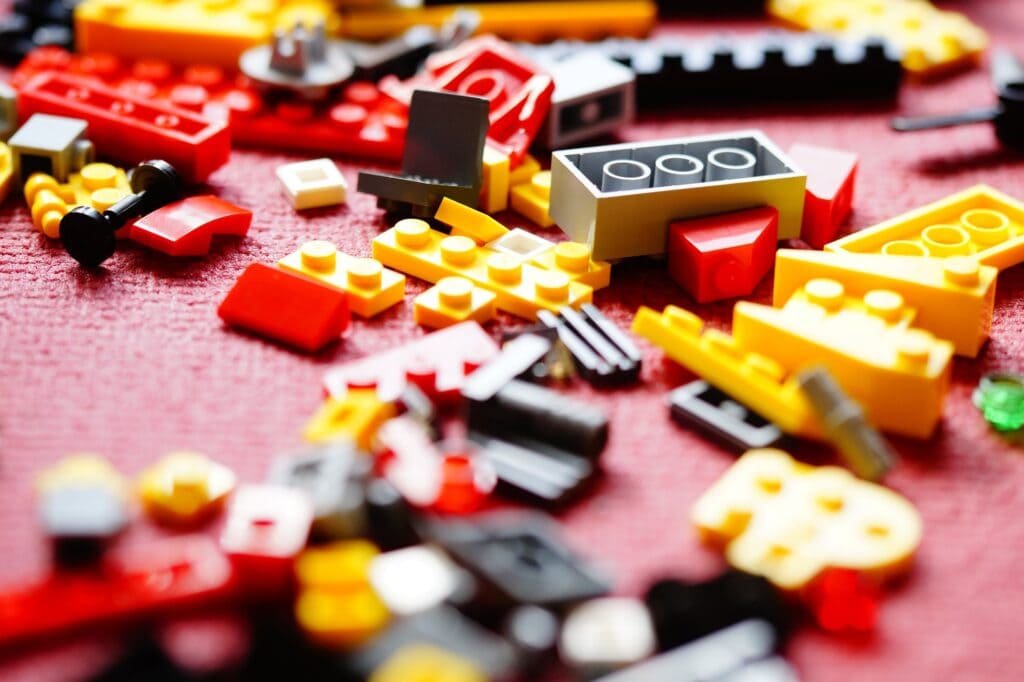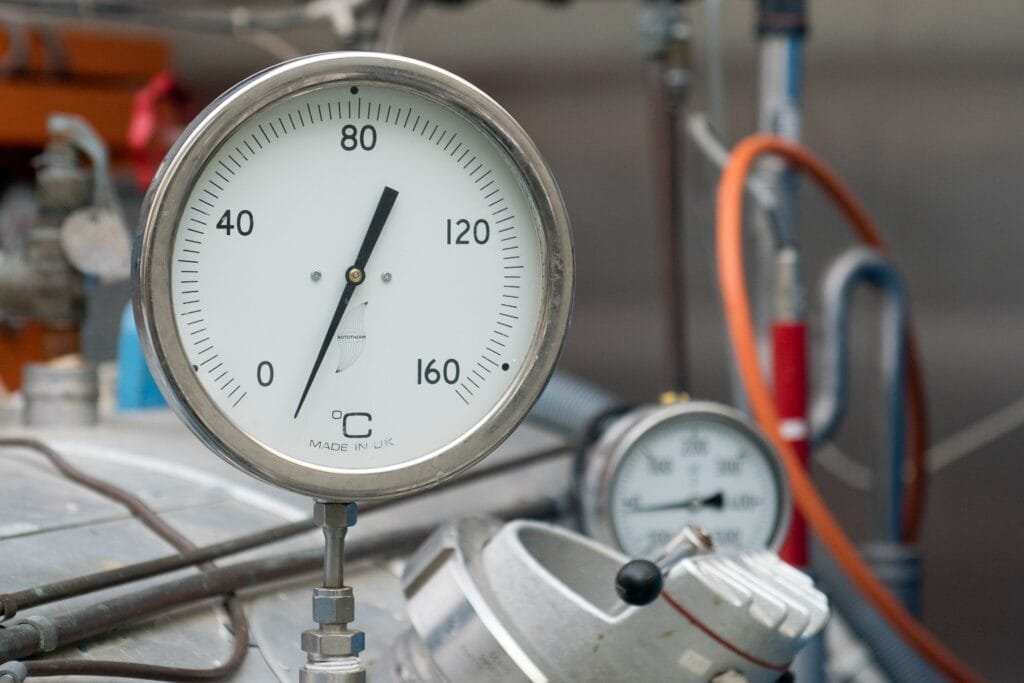क्या आप अपने प्यारे देश ब्राज़ील में फाइबर ऑप्टिक केबल असेंबल करना चाहते हैं? लेकिन ब्राज़ील में टैरिफ़ बहुत ज़्यादा है, है न? खैर, यह निराशाजनक है। फिर भी, एक तरीका मौजूद है जिससे आप चीन से ब्राज़ील में फाइबर ऑप्टिक केबल उपकरण शून्य टैरिफ़ पर आयात कर सकते हैं!
जी हाँ, आपने सही पढ़ा! ब्राज़ील, चिली से आयातित वस्तुओं पर शून्य टैरिफ़ लगाता है; जो कि एक नज़दीकी देश है। इस प्रकार, आप चीन से चिली तक फाइबर ऑप्टिक केबल उपकरण आयात कर सकते हैं। फिर, चिली से ब्राज़ील तक बिना किसी टैरिफ़ के।
यह लेख आपके लिए एक विस्तृत मार्गदर्शिका होगी ताकि आप ब्राजील में शून्य टैरिफ पर उपकरण आयात कर सकें। इस पोस्ट में उपखंड हैं। इसलिए, आप अपनी ज़रूरत के हिसाब से किसी भी विशेष पर जा सकते हैं।
चिली कहां है?
परिचय एवं तथ्य:
पश्चिमी दक्षिण अमेरिका में एक देश है जो एक लंबी, लेकिन संकरी भूमि पर स्थित है, जिसे चिली के नाम से जाना जाता है। एंडीज पूर्व में स्थित है, और विशाल प्रशांत महासागर चिली के पश्चिम में स्थित है। देश 756,096 वर्ग किलोमीटर के एक छोटे से क्षेत्र में फैला हुआ है। इसके अलावा, 2017 के सर्वेक्षण के अनुसार देश की जनसंख्या 17.5 मिलियन है। सैंटियागो चिली की राजधानी है और यह देश का सबसे बड़ा शहर भी है। राष्ट्रीय भाषा स्पेनिश है।

ब्राज़ील और चिली के बीच दूरी
ब्राज़ील और चिली के बीच सीधी रेखा या हवाई दूरी 3084.04 किमी (या 1916.34 मील) है। चिली से ब्राज़ील तक की अनुमानित उड़ान का समय लगभग 3.38 घंटे है।

टैरिफ क्या हैं?
टैरिफ एक ऐसा कर है जो किसी देश में प्रवेश करने वाले या देश से बाहर जाने वाले सामानों पर लगाया जाता है। टैरिफ के माध्यम से एकत्र की जाने वाली राशि को 'ड्यूटी या कस्टम ड्यूटी' कहा जाता है। सीमा शुल्क विभाग दुनिया भर के देशों में टैरिफ एकत्र करता है।
टैरिफ का उद्देश्य:
टैरिफ के दो मुख्य उद्देश्य हैं:
धन जुटाना:
टैरिफ़ से इकट्ठा किया गया पैसा देश के खजाने में जमा हो जाता है। इससे सरकार को देश चलाने में मदद मिलती है।
स्थानीय उद्योगों का संरक्षण:
टैरिफ स्थानीय उद्योगों को अंतर्राष्ट्रीय प्रतिस्पर्धा से भी बचाते हैं।
उदाहरण के लिए, यदि चीन में कोई जूता स्थानीय कंपनी $30 की कीमत पर बना रही है। और कोई दूसरा देश उसी जूते को $25 की कीमत पर बेच रहा है। इससे स्थानीय निर्माता प्रभावित होगा। इस मामले में लोग आयातित जूते खरीदना पसंद करेंगे। इसलिए, आयातित जूतों पर टैरिफ लगाया जाता है। इससे उनकी कीमत $35 हो सकती है।
मुक्त व्यापार समझौता (एफटीए) क्या है?
मुक्त व्यापार समझौता दो या दो से अधिक देशों के बीच हस्ताक्षरित एक संधि है। इस संधि के अनुसार, दो या दो से अधिक देश बिना किसी टैरिफ के वस्तुओं का व्यापार कर सकते हैं।
चीन और चिली के बीच मुक्त व्यापार समझौता
एक एफटीए पर हस्ताक्षर किये गये नवंबर 2005 में चीनी और चिली के राष्ट्रपतियों के बीच हुए समझौते के अनुसार, चीन और चिली आयातित या निर्यात किए गए सामानों पर शून्य टैरिफ लगाते हैं। इन सामानों में 10 वर्षों में कुल उत्पादों का 97% शामिल होगा।
इस प्रकार, ब्राजील चीन से फाइबर ऑप्टिक उपकरण शून्य सीमा शुल्क पर आयात कर सकता है! यदि आप ब्राजील में फाइबर ऑप्टिक केबल विनिर्माण संयंत्र स्थापित करना चाहते हैं तो यह बहुत अच्छी खबर है। अभी भी उलझन में हैं? खैर, चिंता न करें, हम आपको नीचे दिए गए अनुभागों में आगे की प्रक्रिया समझाएंगे। पढ़ते रहें।
ब्राज़ील और चिली के बीच मुक्त व्यापार समझौता
ब्राजील और चिली ने पहले समझौते पर हस्ताक्षर किये मुक्त व्यापार समझौते 6 जून, 2018 को ब्रासीलिया में। इसके तहत, विभिन्न उद्योगों से संबंधित वस्तुओं पर शून्य टैरिफ लगाया जाएगा।
इससे यह संकेत मिलता है कि ब्राजील चिली से फाइबर ऑप्टिक उपकरण शून्य शुल्क पर आयात कर सकता है।
शून्य टैरिफ पर ब्राजील में फाइबर ऑप्टिक केबल उपकरण आयात करने की प्रक्रिया
इस पूरे लेख का सबसे दिलचस्प हिस्सा यहाँ आता है! नीचे दिया गया भाग पूरी प्रक्रिया को समझाता है।
चरण 1. चिली में फाइबर ऑप्टिक उपकरण विनिर्माण कंपनी पंजीकृत करें:
आपको सबसे पहले चिली में फाइबर ऑप्टिक केबल निर्माण कंपनी को पंजीकृत कराना होगा। यह इसलिए ज़रूरी है क्योंकि आयातकों को कंपनी के विवरण की ज़रूरत होती है। पंजीकरण प्रक्रिया सरल है और इसमें 10 दिन से ज़्यादा समय नहीं लगता।

चिली में कंपनी पंजीकृत करने की आवश्यकताएं:
चिली में कंपनी पंजीकृत करने से पहले आपके पास निम्नलिखित विवरण होना चाहिए:
सुझाए गए कंपनी नाम 'चिली की कंपनी रजिस्ट्री' सुझाए गए कंपनी नामों को स्वीकृत या अस्वीकृत करती है। यह विभाग प्रस्तावित नाम की जाँच करता है। इसलिए, रजिस्ट्री को आगे बढ़ने से पहले प्रस्तावित नाम को स्वीकृत करना होगा।
संक्षिप्त कंपनी विवरण
विवरण में कंपनी के लक्ष्यों और भावी गतिविधियों का उल्लेख होना चाहिए।
शेयरधारकों का विवरण
आपकी कंपनी के शेयरधारक (यदि कोई हों) किसी भी राष्ट्रीयता के हो सकते हैं। लेकिन उनके नाम विवरण में बताए जाने चाहिए। शेयरधारकों की संख्या 2 से 50 तक हो सकती है।
निदेशक का विवरण
कंपनी के निदेशक का चिली निवासी होना आवश्यक नहीं है तथा वह किसी भी राष्ट्रीयता का हो सकता है।
पंजीकृत पता
आपकी कंपनी के पास पंजीकृत कार्यालय का पता होना चाहिए। यह पता कंपनी के विवरण में उल्लेखित होना चाहिए।
एसोसिएशन का ज्ञापन प्राप्त करें
'कंसर्वेडोर डी कॉमर्सियो' इस महत्वपूर्ण दस्तावेज को एकत्रित करता है। इसलिए, आपको यह दस्तावेज भी जमा करना होगा।
एक कानूनी प्रतिनिधि रखें
चिली की कंपनी के पास होना चाहिए कानूनी प्रतिनिधिप्रतिनिधि चिली का मूल निवासी होना चाहिए तथा उसके पास वैध वीज़ा होना चाहिए।
कर पहचान संख्या प्राप्त करें
उपर्युक्त औपचारिकताएं पूरी होने के बाद आईआरएस कर पहचान संख्या जारी करता है।
अब आप चिली में अपना व्यवसाय शुरू कर सकते हैं।
चरण 2. चीन से चिली तक फाइबर ऑप्टिक उपकरण आयात करें:
दूसरा चरण चीन से चिली तक फाइबर ऑप्टिक केबल उपकरण आयात करना है। विस्तृत आयात प्रक्रिया हमारे लेख में बताई गई है। पिछला पोस्टफिर भी, नीचे चर्चा की गई कुछ अतिरिक्त और महत्वपूर्ण बातों पर विचार करना आवश्यक है:
निर्धारित करें कि क्या आपूर्तिकर्ता अंतिम संयोजन की व्यवस्था कर सकता है:
फाइबर ऑप्टिक केबल उपकरण आमतौर पर तैयार या अर्ध-तैयार उत्पाद के रूप में निर्यात किया जाता है। इसलिए, इसे एक विशिष्ट प्रोटोकॉल का पालन करके इकट्ठा किया जाता है। अधिकांश आपूर्तिकर्ताओं के पास एक असेंबलिंग टीम होती है। टीम खरीदार को उपकरण को उसके अंतिम गंतव्य पर पहुंचने के बाद इकट्ठा करने में मदद करती है। इसलिए, आपको यह तय करना चाहिए कि आपूर्तिकर्ता चिली या ब्राजील में उपकरण की असेंबली और स्थापना की व्यवस्था कर सकता है या नहीं।
एचएस कोड निर्धारित करें:
HS (हार्मोनाइज्ड सिस्टम) कोड नाम और संख्याओं के लिए एक अंतरराष्ट्रीय मानक है। HS कोड ट्रेड किए गए उत्पादों को वर्गीकृत करता है। एक खरीदार के रूप में, आपको उत्पादन लाइन पर HS कोड को सत्यापित करने की आवश्यकता है। उदाहरण के लिए, हांग काई की उत्पादन लाइन पर HS कोड 84794000 है। यदि सामान अलग-अलग टुकड़ों के रूप में है, तो HS कोड को भाग-दर-भाग सत्यापित किया जाता है।
आपूर्तिकर्ता से सटीक सर्किट आरेख प्राप्त करें:
आपको आयातित उपकरणों का सटीक और सरल सर्किट आरेख प्राप्त करने की आवश्यकता है। इसमें जल सर्किट आरेख और संपूर्ण उत्पादन लाइन के लेआउट आरेख शामिल हैं। ये आरेख आपको उपकरणों के रखरखाव और स्थापना में सहायता करेंगे।

आपूर्तिकर्ता से विस्तृत स्थापना मैनुअल प्राप्त करें:
आपूर्तिकर्ता को एक विस्तृत इंस्टॉलेशन मैनुअल प्रदान करने की आवश्यकता है। आपूर्तिकर्ता खरीदार की सहायता के लिए एक इंस्टॉलेशन टीम भेजता है। यह टीम उपकरण की स्थापना और संयोजन को संभालती है। लेकिन, वर्तमान महामारी की स्थिति में एक टीम भेजना संभव नहीं है। इसलिए, इंस्टॉलेशन मैनुअल को बहुत विस्तृत होना चाहिए। मैनुअल में सबसे छोटे चरणों को भी बताना चाहिए।
उपकरण सूची:
उपकरण की असेंबली के लिए कुछ उपकरणों की आवश्यकता होती है। इन उपकरणों को उपकरणों की सूची में दर्शाया जाना चाहिए। आपूर्तिकर्ता को उपकरणों की सूची प्रदान करनी होगी।
संचालन प्रक्रिया निर्धारित करें:
पूरी प्रक्रिया में सबसे महत्वपूर्ण चरण आयातित उपकरण का संचालन है। आपको आपूर्तिकर्ता के साथ निम्नलिखित विवरणों को अंतिम रूप देना होगा:
यदि आपके पास प्रोग्राम इंजीनियर है, तो आपूर्तिकर्ता को उत्पादन लाइन के लिए पूरा प्रोग्राम प्रदान करना होगा। इंजीनियर द्वारा प्रोग्राम को आवश्यकताओं के अनुसार समायोजित और संशोधित किया जा सकता है।
लेकिन, अगर आपके पास प्रोग्राम इंजीनियर नहीं है, तो आपूर्तिकर्ता को पहले से ही PLC में प्रोग्राम इंस्टॉल करना होगा। फिर आपको प्रोग्राम में माइक्रो-एडजस्टमेंट करने के लिए प्रोग्राम इंजीनियर को नियुक्त करना होगा। एक प्रोग्राम इंजीनियर को आमतौर पर $3000/माह पर नियुक्त किया जा सकता है।
चरण 3. चिली में फाइबर ऑप्टिक केबल उपकरण को इकट्ठा करें
एक बार जब आप फाइबर ऑप्टिक केबल उपकरण के पुर्जे आयात कर लेते हैं, तो अगला चरण उन्हें असेंबल करना होता है। फिर भी, असेंबली प्रक्रिया से पहले और उसके दौरान निम्नलिखित बिंदुओं पर विचार किया जाना चाहिए:
प्राप्त माल की सूची को ऑर्डर किए गए माल की सूची से क्रॉस-चेक करें
सत्यापित करें कि प्राप्त उपकरण या सहायक उपकरण पूर्ण हैं, तथा कोई भाग या सहायक उपकरण गायब नहीं है।
स्थापना मैनुअल/लेआउट आरेख की जाँच करें
जाँच करें कि आपूर्तिकर्ता ने निम्नलिखित भेजा है या नहीं:
- स्थापना मैनुअल
- लेआउट आरेख
- सर्किट आरेख
- जल सर्किट आरेख
- उपकरण सूची.

उपकरण को लेआउट/सूची के अनुसार सेट करें
अर्द्ध-तैयार उत्पादों और सहायक उपकरणों को निर्धारित संख्या और लेआउट के अनुसार स्थापित करें।
स्थापना मैनुअल/स्थापना चित्र पढ़ें
उपकरण को जोड़ते समय स्थापना मैनुअल/स्थापना चित्र का पालन करें।
ध्यानपूर्वक स्थापित करें
स्थापना प्रक्रिया लेगो खिलौनों की असेंबलिंग जैसी ही है। फिर भी, इस मामले में पर्याप्त स्पेयर पार्ट्स उपलब्ध नहीं हैं। इसलिए, स्थापना बहुत सावधानी से की जानी चाहिए।
चरण 4. चिली में उत्पादन लाइन का परीक्षण करें
परीक्षण प्रक्रिया निम्नलिखित चरणों में पूरी की जानी चाहिए:
मुख्य विद्युत कैबिनेट को पावर दें:
अगला चरण मुख्य विद्युत कैबिनेट को सक्रिय करना है।
निम्नलिखित सभी का परीक्षण करें:
- मोटर्स (मोटर की सामान्य घूर्णन दिशा दक्षिणावर्त होती है और इसकी पुष्टि की जानी चाहिए।)
- बिजली के उपकरण
- इलेक्ट्रॉनिक उपकरण
इसके अलावा अन्य विद्युत घटकों का भी परीक्षण करें जैसे:
- पलटनेवाला
- एम्मिटर
- तापमान नियंत्रण तालिका
- चयनकर्ता स्विच
⚠️सावधानी!!!
मुख्य बिजली लाइन में 380V, 50Hz का बहुत बड़ा वोल्टेज होता है, और यह तीन-चरणीय पांच-तार वाली होती है। किसी भी विद्युत खतरे से बचने के लिए ग्राउंड वायर को अवश्य जोड़ा जाना चाहिए।
तापमान अंशांकन:
बेटिंग मशीन चालू करने से पहले तापमान का अंशांकन किया जाना चाहिए। इसके लिए बैरल हीटिंग सेक्शन में रखे थर्मामीटर का उपयोग करें, और जांचें कि वास्तविक तापमान सेट किए गए तापमान के बराबर है या नहीं।

जल प्रवाह की जाँच करें:
यद्यपि प्रत्येक उपकरण के लिए जल प्रवाह तंत्र अलग-अलग होता है। फिर भी, सभी प्रशीतन उपकरणों के सामान्य संचालन की जाँच एक ही तकनीक का उपयोग करके की जा सकती है। सामान्य संचालन के लिए, जल प्रवाह चक्रीय होना चाहिए और गर्म पानी को ठंडे पानी से अलग किया जाना चाहिए।
बेकिंग:
पीई जैसी किसी भी चिपकने वाली सामग्री के लिए सुखाने का तापमान निर्धारित किया जाता है। चिपकने वाली सामग्री में किसी भी अशुद्धता को हटाने के लिए सामग्री को 24 घंटे तक बेक किया जाता है।
उत्पादन लाइन की विस्तार से जाँच:
ऊपर बताए गए बुनियादी चरणों की जाँच और उनका पालन करने के बाद, अगला चरण उत्पादन लाइन की विस्तृत जाँच करना है। इसमें निम्नलिखित चरण शामिल हैं:
तापमान सेट करें:
वास्तविक परीक्षण प्रक्रिया शुरू होने से आधे घंटे पहले तापमान सेट किया जाना चाहिए। चूंकि रबर का गलनांक अधिक होता है, इसलिए इसमें आमतौर पर तीस से साठ मिनट लगते हैं।
एक्सट्रूडर प्रारंभ करें:
एक नए एक्सट्रूडर को बैरल में मौजूद अशुद्धियों को बाहर निकालने में 15-25 मिनट लगते हैं।
फाइबर की डेटा स्पीड जांचें:
केबल तैयार होने के बाद उसमें न्यूनतम क्षीणन प्रभाव सुनिश्चित करने के लिए फाइबर की डेटा गति की जांच करें।
उपकरण के लिंकेज की जाँच करें:
लिंकेज मोड का चयन करें और जांचें कि केबल के बाहरी व्यास के मान में कोई असामान्यता तो नहीं है।
फाइबर ऑप्टिक केबल के डेटा विचरण की जाँच करें:
अंतिम परीक्षण यह जांचना है कि लाइन में डेटा बहुत भिन्न है या नहीं। फाइबर ऑप्टिक केबल में डेटा प्रवाह हमारी आवश्यकताओं के अनुरूप होना चाहिए।
चरण 5. फ़ाइबर ऑप्टिक केबल उपकरण को ब्राज़ील में पुनः निर्यात करें
अगला कदम इस इकट्ठे उपकरण को ब्राजील को फिर से निर्यात करना है। जैसा कि ऊपर बताया गया है, ब्राजील और चिली ने एक मुक्त व्यापार समझौते पर हस्ताक्षर किए हैं, इसलिए दोनों देशों में से किसी भी देश द्वारा इस उपकरण पर कोई टैरिफ नहीं लगाया जाएगा।
अगला भाग चिली से ब्राज़ील तक उपकरण के स्थानांतरण के लिए परिवहन विधि का चयन करना है। संभावित परिवहन विधियाँ इस प्रकार हैं:
चिली से ब्राज़ील तक फाइबर उपकरण निर्यात करने के संभावित परिवहन तरीके:
सड़क परिवहन:
दक्षिण अमेरिकी देशों से ब्राज़ील तक माल परिवहन का सबसे कारगर और कुशल तरीका सड़क मार्ग है। चिली भी एक दक्षिण अमेरिकी देश है। इसलिए, चिली में आपकी कंपनी से ब्राज़ील तक उपकरण परिवहन के लिए यह तरीका सबसे उपयुक्त है। एक अध्ययन से पता चलता है कि ब्राज़ील में 60% कार्गो परिवहन सड़कों द्वारा किया जाता है। लगभग सभी राज्यों की राजधानियों में पक्की सड़कें या राजमार्ग हैं। CNC द्वारा किए गए एक सर्वेक्षण में ब्राज़ील में 1.7 मिलियन किलोमीटर सड़कें दिखाई गई हैं।
ब्राज़ील में सड़क परिवहन किसके द्वारा संचालित किया जाता है? राष्ट्रीय भूमि परिवहन एजेंसी.

रेल परिवहन
ब्राज़ील में माल परिवहन का दूसरा सबसे ज़्यादा इस्तेमाल किया जाने वाला साधन रेलवे है। देश में रेलवे प्रणाली 30,000 किलोमीटर के बड़े क्षेत्र को कवर करती है। हालाँकि, साओ पाउलो और रियो डी जेनेरो में पर्याप्त कम्यूटर ट्रेन मार्ग हैं।
ब्राज़ील में रेल परिवहन किसके द्वारा संचालित किया जाता है? राष्ट्रीय भूमि परिवहन एजेंसी.
समुद्री पारगमन
8.5 हज़ार किलोमीटर की बड़ी तटरेखा होने के बावजूद, समुद्र के ज़रिए ब्राज़ील में सिर्फ़ 13% कार्गो की ढुलाई होती है। एक सर्वेक्षण के अनुसार, वर्ष 2019 में ब्राज़ील के बंदरगाहों से लगभग 1,104 बिलियन टन कार्गो की ढुलाई हुई। फिर भी, समुद्री पारगमन ब्राज़ील के विदेशी व्यापार का सिर्फ़ 5% ही दर्शाता है।
ब्राज़ील में समुद्री परिवहन का प्रबंधन सरकारी समुद्री परिवहन एजेंसी द्वारा किया जाता है।
कुल लागत
हालाँकि चिली से ब्राज़ील में आयात किए जाने वाले सामान पर कोई शुल्क नहीं लगाया जाता है। फिर भी, आपको कुछ अतिरिक्त लागत चुकानी पड़ती है। इसमें शामिल हैं:
- चिली कंपनी के पंजीकरण की लागत
- चिली परिसर की लागत
- स्थापना उपकरणों की लागत
- इंजीनियर की फीस
- चिली से ब्राज़ील तक परिवहन की लागत
यह लागत अभी भी उस उच्च टैरिफ 25% से कम है जो आपको किसी अन्य देश से ब्राजील में माल आयात करने पर चुकाना पड़ता है।
अंतिम टिप्पणियाँ:
ब्राज़ील के टैरिफ़ बहुत ज़्यादा हैं। इसलिए, अगर आप चीन से सीधे ब्राज़ील में फाइबर ऑप्टिक केबल उपकरण आयात करते हैं, तो आपको बहुत ज़्यादा कस्टम ड्यूटी चुकानी होगी। हालाँकि, इस लेख में बताई गई प्रक्रिया का पालन करके उसी उपकरण को बिना किसी शुल्क के आयात किया जा सकता है। अधिक जानकारी के लिए, हमारे पेज पर जाएँ वेबसाइट ब्लॉग!





